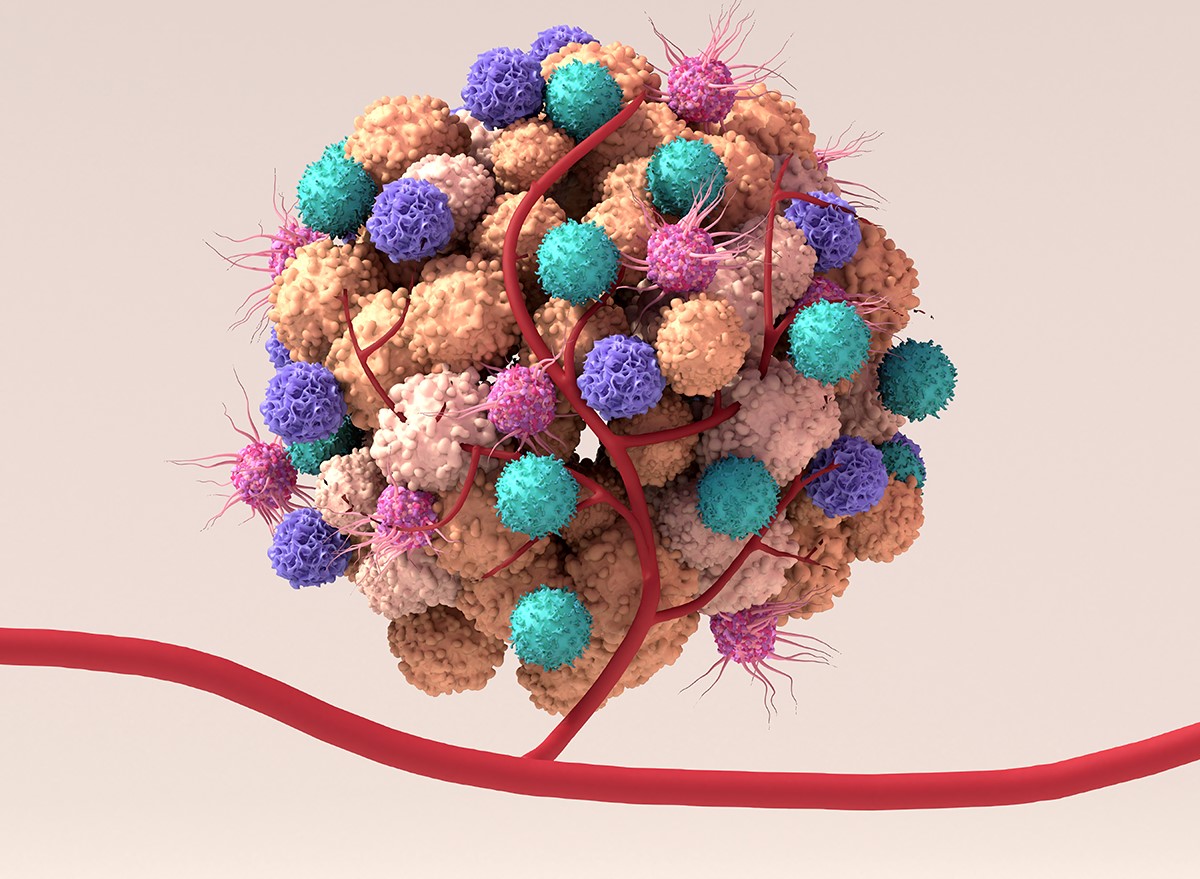
The microenvironment is a fascinating aspect of biology that plays a vital role in the functioning and survival of organisms. It refers to the immediate surroundings of an organism, including the physical and chemical factors that influence its growth, development, and interactions. Understanding the intricacies of the microenvironment is crucial for comprehending various biological processes and their implications.
In this article, we will delve into 15 unbelievable facts about the microenvironment. From its impact on cellular behavior to its role in disease progression, we will explore the diverse aspects of this dynamic and complex system. So, put on your scientific goggles and get ready to be amazed by the wonders of the microenvironment.
Key Takeaways:
- The microenvironment, like a unique neighborhood for cells, affects everything from development to disease. It’s like a tiny world that shapes the big picture of biology!
- Understanding the microenvironment helps scientists develop new treatments, protect ecosystems, and unravel the mysteries of life at a cellular level. It’s like discovering the secret code to nature’s intricate puzzles!
Microenvironments are diverse and unique.
The microenvironment refers to the immediate surroundings of a cell, tissue, or organism. It can vary greatly depending on the specific location, such as the soil, ocean, or human body. The incredible diversity of microenvironments allows for a wide range of life forms to thrive.
Within the microenvironment, cells interact with neighboring cells, ECM (extracellular matrix), and various molecules. This intricate network of interactions influences cell behavior, metabolism, and overall function.
The microenvironment plays a crucial role in development.
During embryonic development, the microenvironment provides essential cues that guide the formation of different tissues and organs. Signals from the surrounding microenvironment can activate specific genes and determine cell fate, leading to the creation of complex organisms.
Moreover, microenvironmental factors are critical for stem cell maintenance and differentiation. Stem cells receive signals from their niche, a specialized microenvironment that regulates their self-renewal or directs them to differentiate into specific cell types.
The microenvironment affects cancer progression.
Tumor microenvironment plays a pivotal role in cancer development and progression. The microenvironment supports tumor growth by providing nutrients, promoting angiogenesis (the formation of new blood vessels), and suppressing the immune system.
Additionally, interactions between cancer cells and the microenvironment can influence treatment response. Understanding the complex dynamics within the tumor microenvironment is crucial for developing effective cancer therapies.
Climate change impacts microenvironments.
Climate change has significant effects on microenvironments around the world. Rising temperatures, alterations in precipitation patterns, and increased carbon dioxide levels impact ecosystems, leading to shifts in biodiversity and ecological interactions.
These changes can have far-reaching consequences, including the extinction of species, disruption of food chains, and the emergence of new diseases. The study of microenvironments helps us understand how these changes affect organisms on a small scale.
Microenvironments are key in tissue engineering.
In tissue engineering, creating a suitable microenvironment is essential for the successful regeneration of damaged or diseased tissues. By mimicking the natural environment, scientists can provide the necessary cues for cells to proliferate, differentiate, and integrate into the surrounding tissue.
This field holds great promise for medical applications, such as the development of artificial organs and the repair of damaged tissues in patients.
The microenvironment affects microbial growth.
Microbes inhabit various microenvironments, including soil, water, and our own bodies. Factors such as temperature, pH, nutrient availability, and the presence of other microorganisms greatly influence microbial growth and survival.
Studying microbial microenvironments helps us understand how pathogens spread and how beneficial microbes can be harnessed for applications in agriculture, industry, and medicine.
The microenvironment influences gene expression.
The microenvironment plays a pivotal role in regulating gene expression. It can activate or suppress specific genes, leading to changes in cell behavior and function.
These changes are crucial in various biological processes, including development, immune response, and tissue regeneration. Understanding how the microenvironment influences gene expression can provide valuable insights into disease mechanisms and potential therapeutic targets.
Microenvironments are vital for drug discovery.
The microenvironment is intricately involved in drug response and efficacy. Tissue-specific microenvironments can affect drug distribution, metabolism, and interaction with target cells.
By recreating microenvironmental conditions in the laboratory, researchers can better predict how drugs will behave in vivo and develop more targeted and efficient therapeutic strategies.
Microenvironments can be engineered.
Scientists have developed techniques to engineer microenvironments to study specific cellular behaviors and functions. These artificial microenvironments allow precise control over key factors, such as physical properties, chemical gradients, and cell-cell interactions.
By manipulating the microenvironment, researchers can gain insights into fundamental biological processes and potentially create new approaches for tissue regeneration and disease treatment.
The microenvironment affects cellular metabolism.
Metabolic processes within cells are influenced by the surrounding microenvironment. Factors such as nutrient availability, oxygen levels, and waste product accumulation can profoundly impact cellular metabolism and energy production.
Understanding the relationship between the microenvironment and cellular metabolism is critical for both basic scientific research and the development of therapeutic interventions.
Microenvironments support symbiotic relationships.
Certain microenvironments facilitate mutually beneficial interactions between different organisms. For example, coral reefs provide a microenvironment for various species of fish, algae, and invertebrates, creating a complex and interconnected ecosystem.
Studying these symbiotic relationships within microenvironments enhances our understanding of ecological systems and can contribute to conservation efforts.
Microenvironments can protect against pathogens.
Some microenvironments have evolved specific mechanisms to defend against pathogens. Mucus in the respiratory tract and gut microbiota are examples of microenvironmental components that help prevent the entry and proliferation of harmful microorganisms.
Understanding these protective mechanisms can lead to the development of new strategies for combating infectious diseases.
The microenvironment influences immune cell behavior.
The immune system is highly sensitive to microenvironmental cues. Immune cells respond differently depending on the signals they receive from the surrounding microenvironment.
These responses can range from activating an immune response to tolerating certain antigens. Understanding the complex interactions between immune cells and the microenvironment is crucial for developing effective immunotherapies and vaccines.
Microenvironments impact aquatic ecosystems.
The unique properties of aquatic microenvironments, such as coral reefs, mangroves, and freshwater ecosystems, support diverse and delicate ecosystems. These microenvironments provide habitats and essential resources for a wide array of aquatic species.
However, factors such as pollution, habitat destruction, and climate change pose significant threats to these fragile ecosystems. Understanding the dynamics of aquatic microenvironments is vital for implementing effective conservation strategies.
The microenvironment influences neuronal development.
During brain development, the microenvironment plays a critical role in guiding neuronal migration, synapse formation, and circuit assembly.
Interactions within the microenvironment regulate the development of the nervous system and determine its functional connectivity. Any disruptions to the microenvironment during development can have profound effects on brain function.
Conclusion
In conclusion, the microenvironment is a fascinating and complex topic within the field of biology. It plays a crucial role in shaping the growth, development, and behavior of organisms. From the intricate interactions between cells to the ever-changing conditions within ecosystems, the microenvironment provides a wealth of knowledge and opportunities for exploration. Understanding the dynamics of the microenvironment can lead to breakthroughs in various fields such as medicine, ecology, and agriculture. By studying and optimizing the microenvironment, scientists can unlock new insights into disease prevention, species conservation, and agricultural productivity. With further research and advancements, the secrets of the microenvironment are bound to unravel, opening up new frontiers of discovery and innovation.
FAQs
1. What is a microenvironment?
A microenvironment refers to the immediate environment surrounding a particular cell, tissue, or organism. It includes factors such as temperature, pH levels, oxygen concentration, and the presence of other cells and molecules.
2. How does the microenvironment influence cell behavior?
The microenvironment exerts a significant influence on cell behavior through various mechanisms, such as chemical signaling, physical cues, and interactions with adjacent cells. It can affect cell growth, differentiation, migration, and even determine cell fate.
3. What role does the microenvironment play in disease progression?
The microenvironment has been implicated in various diseases, including cancer. Factors within the microenvironment can promote tumor growth, angiogenesis, and metastasis. Understanding and targeting these factors can lead to novel therapeutic approaches.
4. Can the microenvironment be manipulated?
Yes, the microenvironment can be manipulated to some extent. Researchers can alter factors such as temperature, nutrient availability, and the presence of specific molecules to study their effects on cellular behavior. Additionally, strategies to modulate the microenvironment are being explored for therapeutic purposes.
5. Are all microenvironments the same?
No, microenvironments can vary greatly depending on the location and context. For example, the microenvironment within an organ differs from that within a tissue, and the microenvironment in a healthy individual may differ from that in a diseased individual.
Intrigued by the incredible world of microenvironments? Keep exploring fascinating scientific topics! Learn about the captivating field of cancer biology and its groundbreaking advancements. Discover the wonders of stem cell niches and their potential to revolutionize regenerative medicine. Immerse yourself in the marvels of science and expand your knowledge today!
Was this page helpful?
Our commitment to delivering trustworthy and engaging content is at the heart of what we do. Each fact on our site is contributed by real users like you, bringing a wealth of diverse insights and information. To ensure the highest standards of accuracy and reliability, our dedicated editors meticulously review each submission. This process guarantees that the facts we share are not only fascinating but also credible. Trust in our commitment to quality and authenticity as you explore and learn with us.


